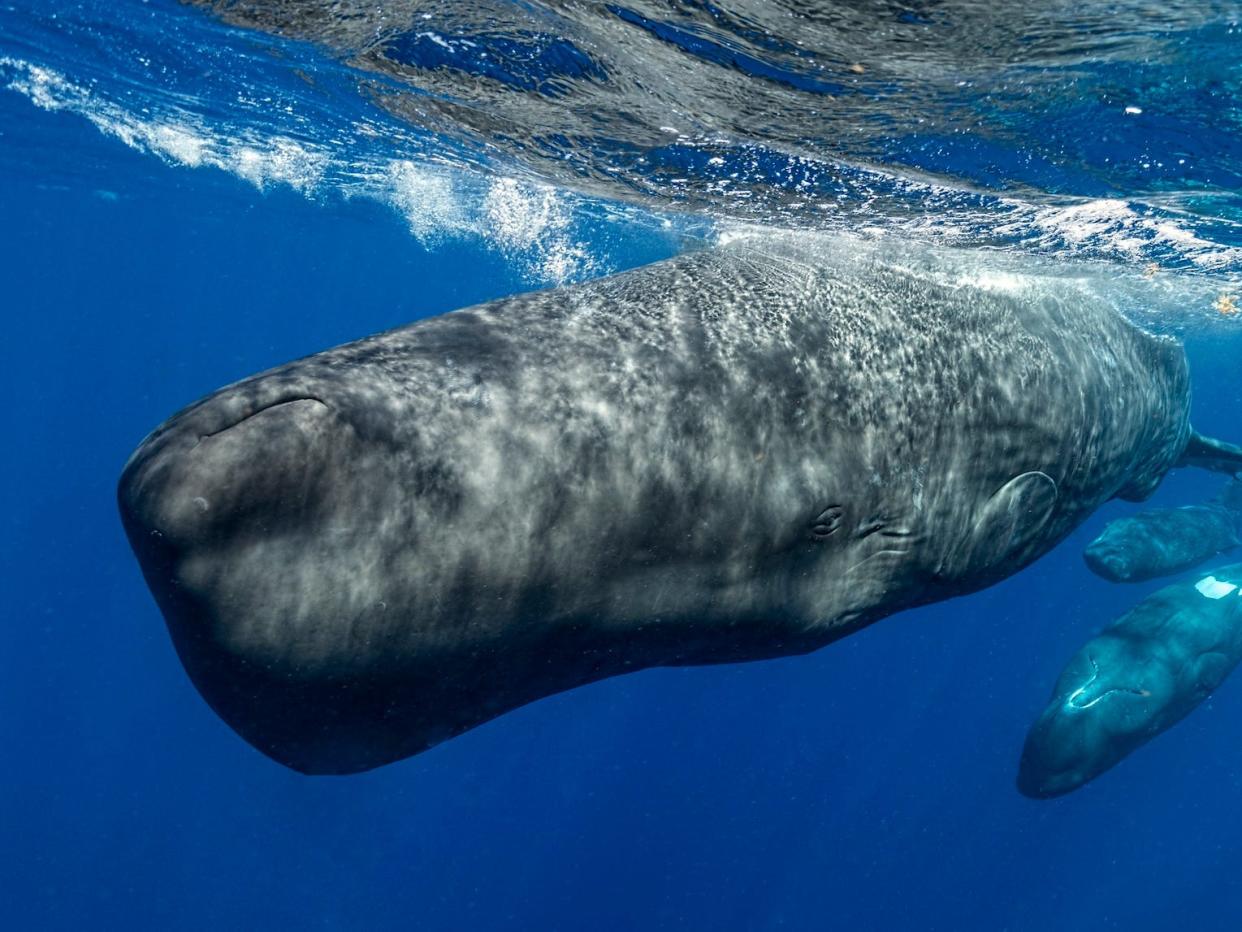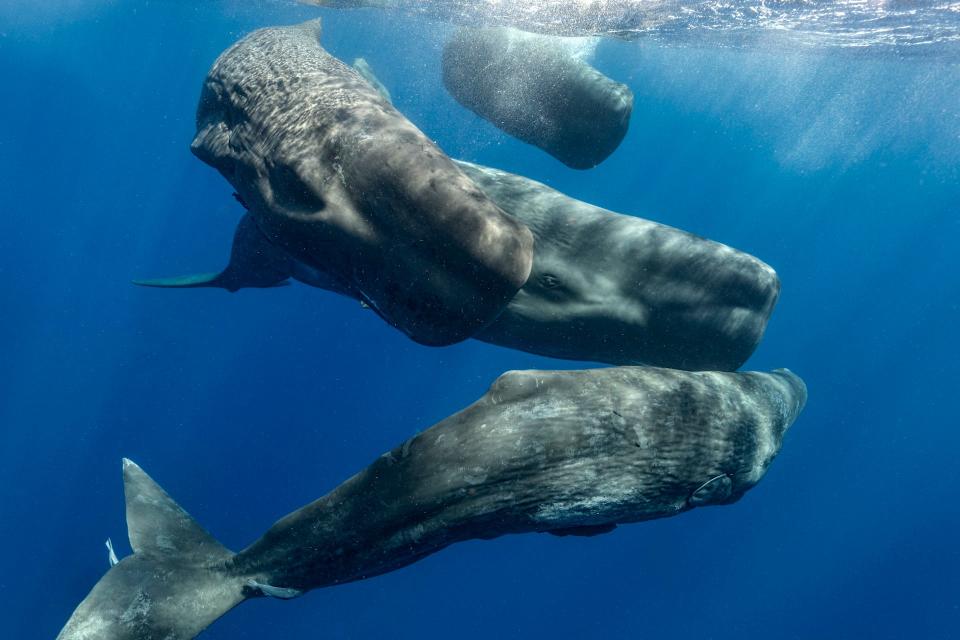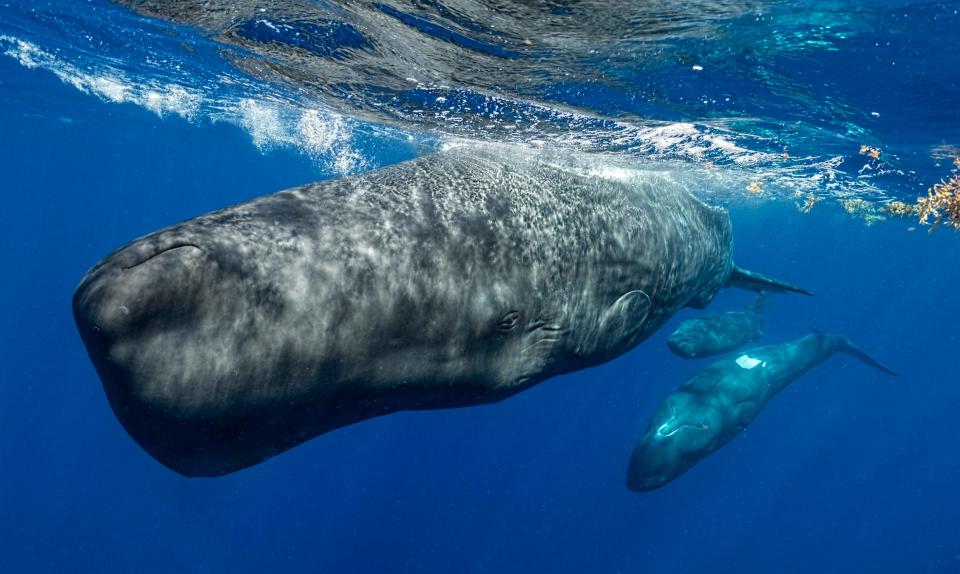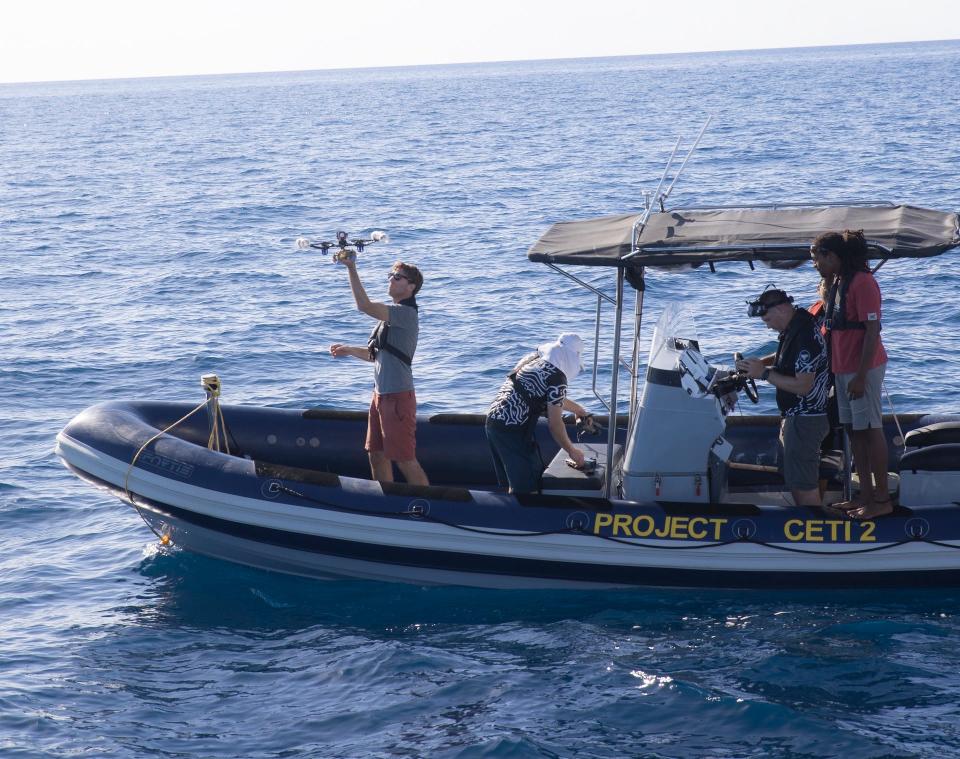Scientists are closer than ever to deciphering the secret language of sperm whales. AI could be the key.

Project CETI is harnessing AI to understand the complex communication system of sperm whales.
In a new study, the project's scientists used AI to decode thousands of sperm whale clicks.
CETI founder David Gruber hopes this work will help humans protect whales from noise pollution.
Whales are highly intelligent, social creatures, so it makes sense that their songs and clicks are probably more than just random sounds. But just how complex is whale speak?
Researchers from Project Cetacean Echolocation Translation Initiative (CETI) are closer than ever to finding out by deciphering that language.
Using AI to decode clicks from sperm whales, the scientists discovered a sophisticated alphabet hidden in the animals' sounds.
That alphabet is the fundamental communications system of the sperm whale, David Gruber, founder and president of Project CETI, told Business Insider.
"It shows that there's a lot of information that can be carried, and they're living very complicated, interactive social lives," he said.
But this is just the beginning. Building this phonetic alphabet into their AI models should allow Project CETI to dive even deeper into the intricacies of whale speak, helping humans better understand and protect these gentle giants.
Cracking the codas

Sperm whales are the loudest animals in the ocean, filling the seas with codas — short bursts of rapid clicks that resemble Morse Code. And similar to Morse Code, their clicks are what they mainly use to communicate and socialize with other sperm whales.
The researchers used AI to analyze and look for patterns in roughly 9,000 codas collected by the Dominica Sperm Whale Project — an organization dedicated to studying sperm whales in the Eastern Caribbean.
Their goal was to answer one simple question: Could they predict the next click?
So, they trained a machine learning algorithm on 80% of the codas, and then ran it to see if it could predict the remaining 20%, Gruber said.
Their results, which they documented in a paper published in the peer-reviewed journal Nature Communications, were astounding.

The algorithm predicted the remaining codas with about 99% accuracy, he added. It was a good sign that the codas followed linguistic patterns.
As they dug deeper into the database, the researchers discovered that the codas actually contain an entire phonetic alphabet, made up of different elements that the researchers call "rhythm," "tempo," "rubato," and "ornamentation."
These elements combine in various ways to form a vast array of distinct codas, suggesting that sperm whale language is more expressive and structured than scientists previously believed, the researchers reported in their paper.
Gruber and his colleagues are a long way from understanding what the whales are actually saying. But the team continues to dive deeper for clues, hoping to answer questions like: How much information can a single coda carry? And can we begin to translate their messages to better understand, and potentially protect, them?
To begin answering these questions, Project CETI is fishing for more data.
Thinking like baby whales

In partnership with the Dominica Sperm Whale Project, Project CETI observes and documents sperm whale communication using a variety of different technologies.
To record codas, they tag whales with acoustic bio-logging devices that capture the animals' vocalizations and provide data specific to each individual whale.
Project CETI is also working to build a fixed-bottom listening station in the island of Dominica, which will record sperm whale sounds across a wide area and create a three-dimensional, interactive map of the whales' locations at all times, Gruber said.
The researchers supplement these auditory recordings with drone surveys of the whales' body language and field observations taken by Project CETI researchers. This provides the necessary context that should help the team understand these sounds on an even deeper level.
"Think of a baby trying to learn a language. It's paying attention, it's looking for context. We feel a lot like we're baby whales," Gruber said.
How to help protect whales

"We ask every day, how is this going to service the whales? How would this benefit them?" Gruber said of the project's research.
One potential benefit is better noise pollution mitigation.
Studies suggest that shipping traffic is on the rise, and resulting underwater noise pollution is an issue of growing concern. It can impact whales' ability to hear each other and disrupt their behavior, according to NOAA.
If we have a better grasp on how whales communicate, it could help inform ways to manage underwater noise pollution and help us better understand its impact on the animals, Gruber said.
"I know that there will be amazing things to come from our understanding of these complex, majestic, beautiful animals," he said.
Read the original article on Business Insider

